Arctic Cat Ups the Ante with Suspension

Blending racing technology into everyday trail sleds
Throughout its history, Arctic Cat’s production sled technology has been closely linked to its race sleds, and sometimes the line between race and consumer sled has been blurred. The 1990 EXT Special, 1994 ZR 440 and several others were available to trail riders as well as racers back in the day. Arctic has always pushed the edge of the performance frontiers and technology developed on race sleds often made its way to production units a few years later. Racing has been and continues to be a vital component of the production sled development process at Arctic Cat.
Race Sled Turned Trail Sled
This year the green and black camp has upped the ante and directly lifted technology from its race sled and released it for public consumption. Arctic Cat’s championship winning Sno Pro chassis, from the Sno Pro 600 race sled, has joined its 2010 lineup as the Sno Pro 500. The new Sno Pro 500 has the same equipment package as its race bred sibling – AWS VIII front suspension, Sno Pro chassis and slide action rear skid – yet it comes with trail-tuned shocks and springs. Now you don’t have to be on the race program to own and enjoy the same chassis and suspension package that took Tucker Hibbert to the top of the podium throughout the snocross season.
Arctic Cat has developed some of the most aggressive and finest handling sleds race sleds. In recent years, Ski-Doo has offered the MX-Z RS in both 600 and 800 displacements while Polaris has offered the 600RR. All of these sleds directly incorporated snocross technology on an off-the-showroom trail sled. But as many riders discovered, a race-inspired sled may seem glamorous, but if you’re not up to the task of riding at race-like speeds, you may find these sleds are too high strung and much too stiff for your tastes. After all, there has been a clear delineation between snocross race sleds and trail sleds because the two are used for completely different riding applications. A snocross sled is not set up for 6-inch stutter bumps, and a trail sled is not equipped for 80-foot double jumps.
The Sno Pro 500 carries springs and shock valving for trail riding while its big brother, the Sno Pro 600, features a full snocross setup. But the brilliance of the Sno Pro 500 is that the machine uses the same suspension, components and geometry and it performs so admirably well in a trail environment. Having a chance to sample the Sno Pro 500 at Snow Shoot in Grand Lake, Colo., I was left duly impressed by the sled’s steering precision and suspension. You could simply stand up and pound through the bumps and the harder you pushed it the better it felt. While it was stiff for a trail sled, it was compliant and controlled in one-foot bumps and larger bumps, so you can ride the sled all day and be comfortable. Also, it was noticeably light and nimble, so you could flick it into a corner with minimal effort. The narrow sculpted seat and high handlebar risers give you a race-type seating position that you don’t get aboard an F-Series sled. Although it felt taller than many sleds, the center of gravity felt low and it tracked flat through the corners.
While many owners will trail ride the Sno Pro 500, many of these sleds will be raced. Arctic Cat’s F5 has been raced in snocross and in cross country. On the United States Cross Country circuit, Arctic Cat F5 rider Timmy Kalhok placed second in season’s end points for Sport 85, and the Sno Pro 500 will replace the F5. With the race-bred equipment, it should be even more successful than its predecessor.
The current Sno Pro 600 was unveiled in 2008, and Cat spent the last two years tweaking and refining the package to create a championship winning snocross sled. As evidenced on the ISOC snocross tour, it has enjoyed considerable success, winning scores of races as well as the Semi-Pro Super Stock Championship. Like the track-bred 600, the Sno Pro 500’s foundation is a pyramidal frame design, which featured chromoloy tubing and extruded aluminum subframe components. The pyramidal frame connects to a gusseting member that extends to the tunnel and uses the tunnel for further reinforcement.
Up front, the AWS VIII A-arm suspension features Arctic Cat’s latest suspension geometry, an extremely long extruded aluminum spindle that increased ground clearance by two inches. The new A-arm front suspension features an upper arm with new ball joint design, which provides extremely responsive and precise steering with very little bump steer and scrub. While the Sno Pro 500 is fitted with Fox Zero Pro shocks, the F-Series Sno Pro is fitted with Fox Float shocks. The Zero Pros offer strong performance and a cost savings over the Floats.
In the rear, a slide action skid, with 13.5 inches of travel, uses the same componentry as the 600 – front and rear arms, pull rods, pivot arm, rails, coupling system, and rear axle. These were designed to cope with the demands of snocross racing, and obviously are up to the task of extreme ditch banging. Both the front and the rear suspension use Fox Zero Pro shocks. The Zero Pros are high-pressure gas-charged IFP shocks with 2-inch hard-anodized 6061-T6 aluminum body and super-finish hard chrome steel shafts. These differ from the Fox Zero Pro X shocks fitted to the Sno Pro 600 race sled. The Zero Pros also feature FIST (Fox Integrated Scraper Technology) to scrape water, dirt, and debris from the shock rod to keep the oil from getting contaminated.
Rear Suspension Upgrade
While the introduction of the Sno Pro 500 has captured headlines, Arctic Cat has made some key changes to the F-Series and Z1 four strokes suspension systems for 2010. Most significantly, the rear arm of the rear suspension has been repositioned about 1 inch closer to the top of the tunnel. This places more of the suspension load on the front arm of the rear suspension, and it has also reduced the attack angle of the suspension rails. In turn, steering is more agile, the sleds corner flatter, and there’s less rolling resistance on the rear skid. According to Arctic Cat representatives, this change has produced a 3-5 mph increase on top end.
This AWS VII returns with the same spindle angle and geometry as last year’s suspension. The double wishbone suspension design delivers 9-1/2 inches of travel dampened by Fox Zero Pro gas shocks. At Snow Shoot, the Z1 Turbo sled provided exceptional tracking and responsive handling.
“…the Z1 Turbo sled provided exceptional tracking and responsive handling.”
Similar to other manufacturers, Arctic Cat offers various shock packages for a specific application and performance level. The F-Series is offered in three trim levels and two shock packages to match. The standard and LXR F-Series sleds come equipped with Fox Zero Pro IFP shocks front and rear for common trail riding conditions and trail touring. For ditch banging and aggressive trail riding, Arctic, like years past, offers the Sno Pro. Up front, the F-series Sno Pro sleds are equipped with Fox Float Shocks while in back the slide action rear suspension is fitted with IFP shocks. The Float shocks progressively ramp up, so the front suspension absorbs low to high-speed bumps in a variety of conditions. Since the coil over spring is removed from the equation, these shocks are up to 6 pounds lighter than conventional IFP shocks.
The F-Series and Z1 Turbo sleds have made a significant improvement in handling and control, and with the addition of the Sno Pro 500, Arctic Cat offers a potent one-two punch for 2010. Aggressive trail riders, ditch bangers and racers should be able to find a sled in the lineup to meet their ambition and performance expectations.
Related Reading
2010 Arctic Cat Snow Pro 500 Review
2010 Arctic Cat Z1 Turbo EXT Review
2010 Arctic Cat F8 Sno Pro Review



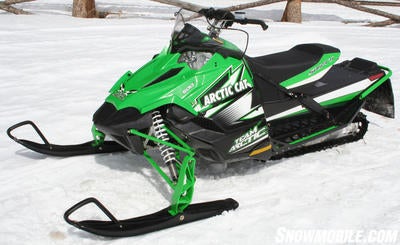
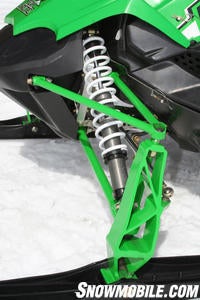
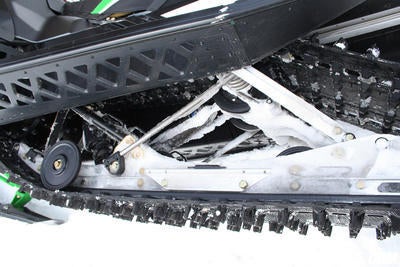
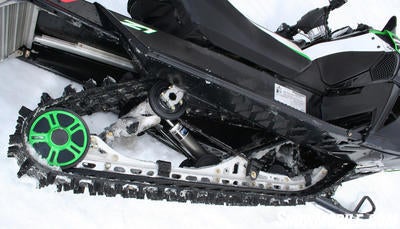
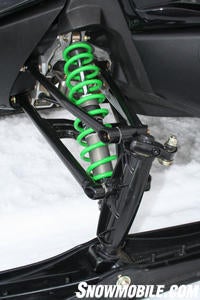
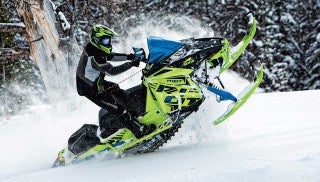




 Your Privacy Choices
Your Privacy Choices